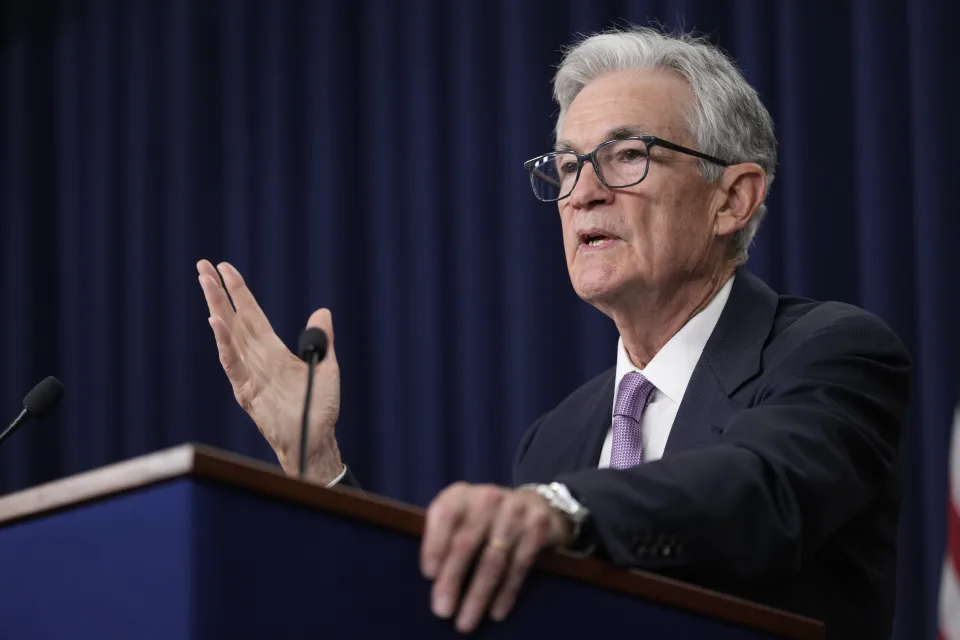Federal Reserve Chair Jay Powell faces increasing pressure to ensure that the central bank’s interest rate cuts successfully lead to a soft landing for the U.S. economy. This week, Powell defended the Fed’s decision to initiate a series of rate reductions, emphasizing that they are not lagging in responding to economic changes.
“We don’t think we’re behind,” Powell stated during a Wednesday press conference, after the Fed’s first rate cut since 2020—a 50-basis-point reduction. However, concerns remain about whether this move came too late, as the job market cools and economic growth shows signs of strain.
Despite Powell’s confidence, some analysts argue that the Fed’s actions are reactionary rather than proactive. Gregory Daco, chief economist at EY, pointed out that Powell acknowledged the Fed might have acted earlier if they had access to July’s employment figures during their late-July meeting. Those figures, released shortly after, revealed a jump in the unemployment rate to 4.3%, raising fears the Fed had delayed its response.
Although the rate dipped slightly to 4.2% in August, further job losses could reignite doubts about the timing of the Fed’s actions. Additionally, Wall Street is anticipating deeper and faster rate cuts than the Fed has currently forecast, complicating the central bank’s path forward.
Fed Chair Powell Announces Potential Rate Cuts, Aims For Economic Soft Landing
Wall Street Skepticism and Diverging Forecasts
The Fed’s current outlook predicts two more 25-basis-point cuts in 2024, followed by additional smaller reductions in 2025. However, Wall Street firms such as BofA Global Research have issued more aggressive forecasts, calling for 75 basis points of cuts by the end of the year.
JPMorgan Chase’s chief economist, Michael Feroli, also anticipates a faster pace of cuts, predicting a 50-basis-point reduction in the next meeting if the labor market continues to soften. Similarly, Wilmington Trust’s chief economist, Luke Tilley, believes the Fed’s forecast is too conservative, expecting 200 basis points of cuts in 2025.
Tilley’s stance reflects a broader concern among some economists that the Fed’s slower path may not be sufficient to accommodate the economy’s need for rate normalization, particularly as inflation is projected to hit the Fed’s 2% target by early 2025.
Internal Divisions Within the Fed
In addition to external pressures, Powell faces internal disagreements within the Federal Open Market Committee (FOMC). The committee is nearly evenly split on the extent of future rate cuts, with some favoring more aggressive easing and others advocating caution. Fed Governor Michelle Bowman’s dissent, advocating for a smaller 25-basis-point cut instead of the 50-basis-point reduction, marks the first such division within the Fed since 2005.
Powell must navigate these internal differences while attempting to maintain the Fed’s credibility and ensure that the rate cuts do not fuel a resurgence in inflation. The Fed forecasts inflation will end 2024 at 2.6%, before falling to 2.2% in 2025, aligning with its goal of steady economic growth without triggering runaway inflation.
As Powell continues to chart the course for rate cuts, the delicate balancing act between managing inflation, economic growth, and the job market will define the coming months for the Fed. The outcome of this strategy could determine whether the U.S. economy achieves the sought-after soft landing or faces further turbulence.
A Strategic Approach To Maximizing Your Interest Earnings After A Fed Rate Cut





